“Don’t Talk Yourself To Death”: Visualizing Information Security at the NSA
Jennifer Holt / University of California, Santa Barbara
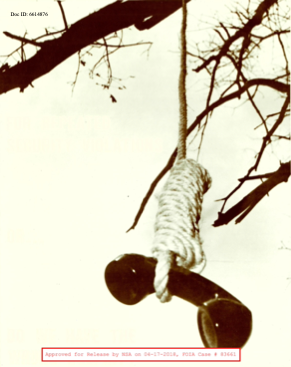
Edward Snowden exposed the National Security Administration’s massive PRISM program in 2013, revealing a secret, blanket surveillance operation that included spying on American citizens and foreign leaders with the assistance of Big Tech and telecommunications companies. This collaborative project between private infrastructure providers and the U.S. government is an alliance that goes back to the beginning of electronic communication. The partnership of U.S. communications carriers and intelligence agencies began shortly after WWI, with the “Black Chamber,” the precursor to the National Security Administration (NSA). Even in peacetime, this bureau worked with the Western Union Telegraph Company and the Postal Telegraph Company to intercept diplomatic and military communications. When it was first revealed that the NSA had been reading military and civilian telegrams and mail in 1929, the agency was defunded by Secretary of State Henry Stimson “on the grounds that it was unethical for the United States to engage in such unprincipled activities,” and because “Gentlemen do not read each other’s mail.”[1] This diplomatic gentility did not last; once the Cold War began, Western Union, RCA, and ITT provided the NSA “with paper tape, microfilm, and later magnetic tape copies of most international telegrams.”[2] This operation was known as Project SHAMROCK and it continued for decades.[3]
Project SHAMROCK is unfortunately largely forgotten by most, despite its distinction at the time as being “the largest governmental interception program affecting Americans ever undertaken.”[4] Its many lessons and prophecies make Snowden’s revelations almost predictable. Nevertheless, the fallout from uncovering PRISM (re)ignited debates about digital privacy, modern citizenship, and the role of the state in a rapidly expanding surveillance culture utilizing private infrastructure and partnerships that continue to this day. The PRISM exposure also represents one of the NSA’s longstanding fears, namely the threat of agency “insiders” spilling its secrets. This historical anxiety embedded in the organization’s DNA is vividly depicted by a series of their in-house posters from the 1950s, 60s, and 70s released in 2018, thanks to a FOIA request by the watchdogs at governmentattic.org. This rich archive highlights the tremendous suspicion with which the agency has viewed their own employees, as the NSA urged their agents to shut their mouths, keep a secret, and maintain the government’s privacy even as they violated that of American citizens.
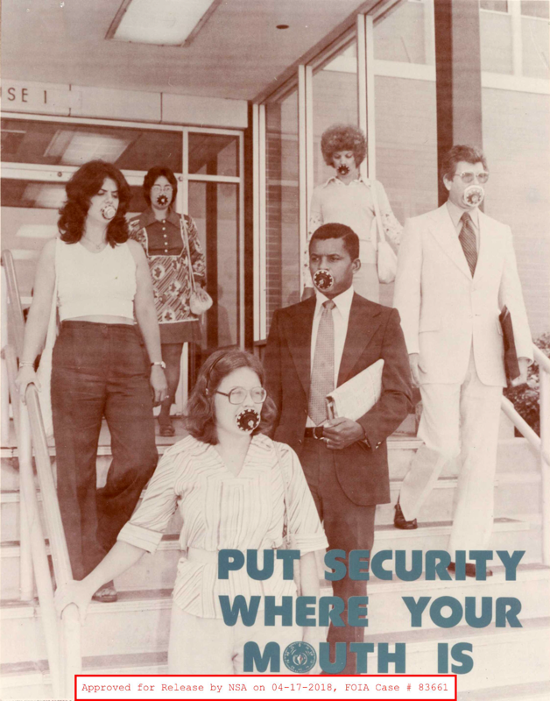
There is no right to individual privacy named outright in the US Constitution. It was vaguely enshrined in the 4th Amendment as a protection against unreasonable searches and seizures by the government, and in the 5th Amendment as the right against self-incrimination and the forced disclosure of private information about oneself. It has been vigorously debated, affirmed, denied, and re/framed since the late 19th century by the legal community, the courts, Congress, activists, and now tech companies. Sarah Igo writes that from the earliest deliberations, “arguments about privacy were really arguments over what it meant to be a modern citizen.”[5] Privacy is at the heart of the state’s power over its citizens, and that delicate balance has a profound impact on the functioning of a democracy. Its presence or absence has been fundamental to the state’s ability to identify people, track their behavior and movements, or intrude on their lives and civil rights. Without uniform privacy, there is no personal autonomy. There is no equality. There is no true freedom.
The construct of freedom and the myriad threats to its survival are mobilized with rather stunning drama in these posters by the NSA, largely vis-à-vis the concept of security and the innumerable hazards to its preservation that an agent encounters in daily life. In visualizing the countless dangers that communication – mediated or not – can represent, these images demonstrate how the threat of sharing state secrets has been imagined, projected, and managed by the NSA over time, particularly during the Cold War. There are stark geopolitical references, as well as appeals to paranoia and the hippie ethos of love and peace. The ideals of family and religion also figured prominently, mainly as sources of exposure and risk: your spouse is not safe, your family is a threat, and even your priest should be regarded with suspicion. Agents were further reminded to keep quiet during the holidays, in the workplace, and to stay away from drugs.
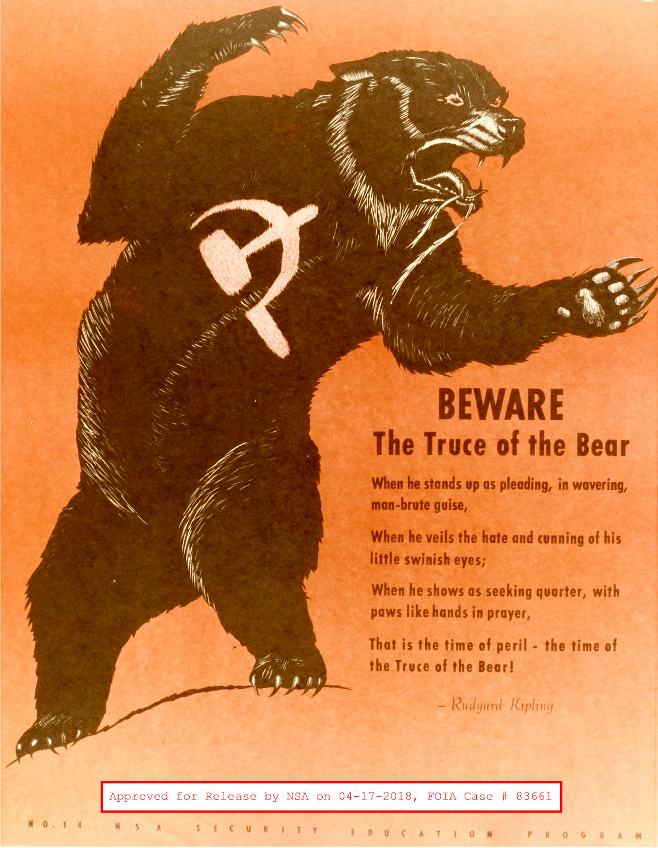

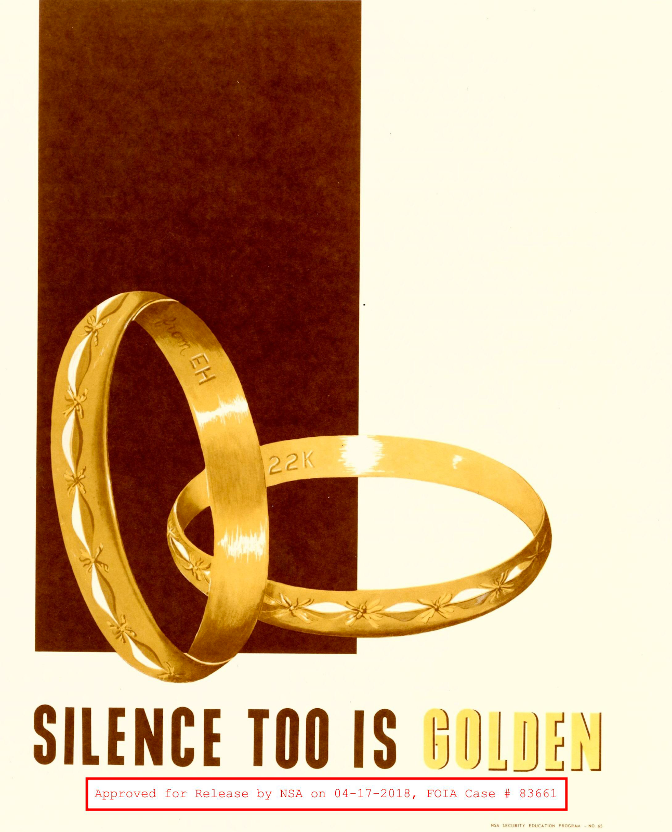
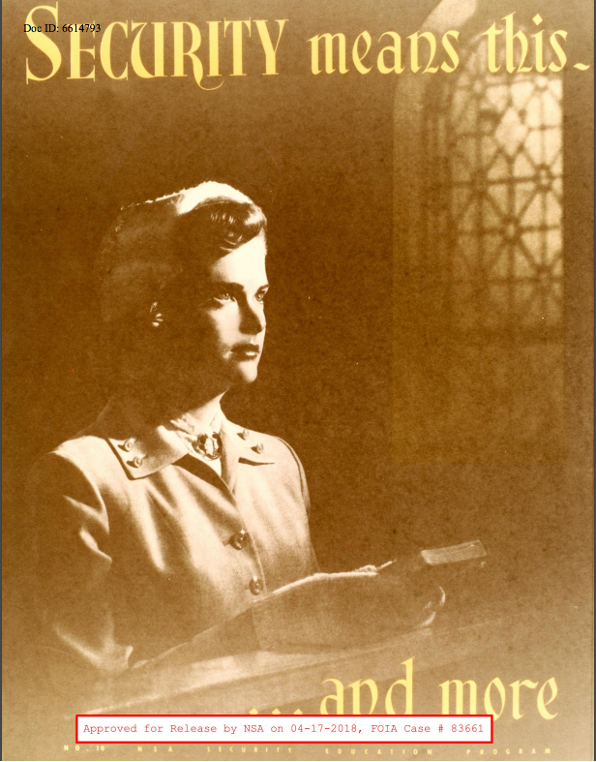
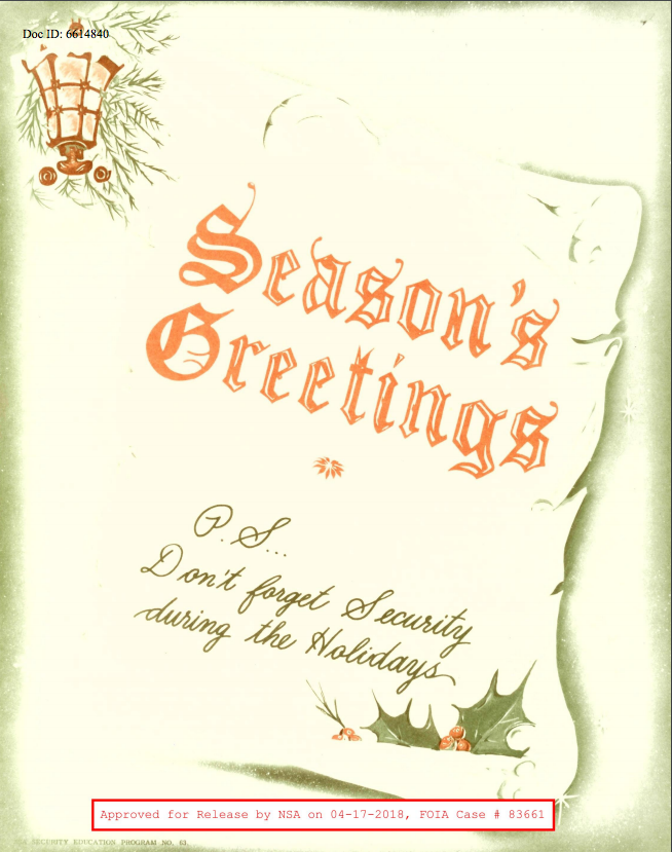
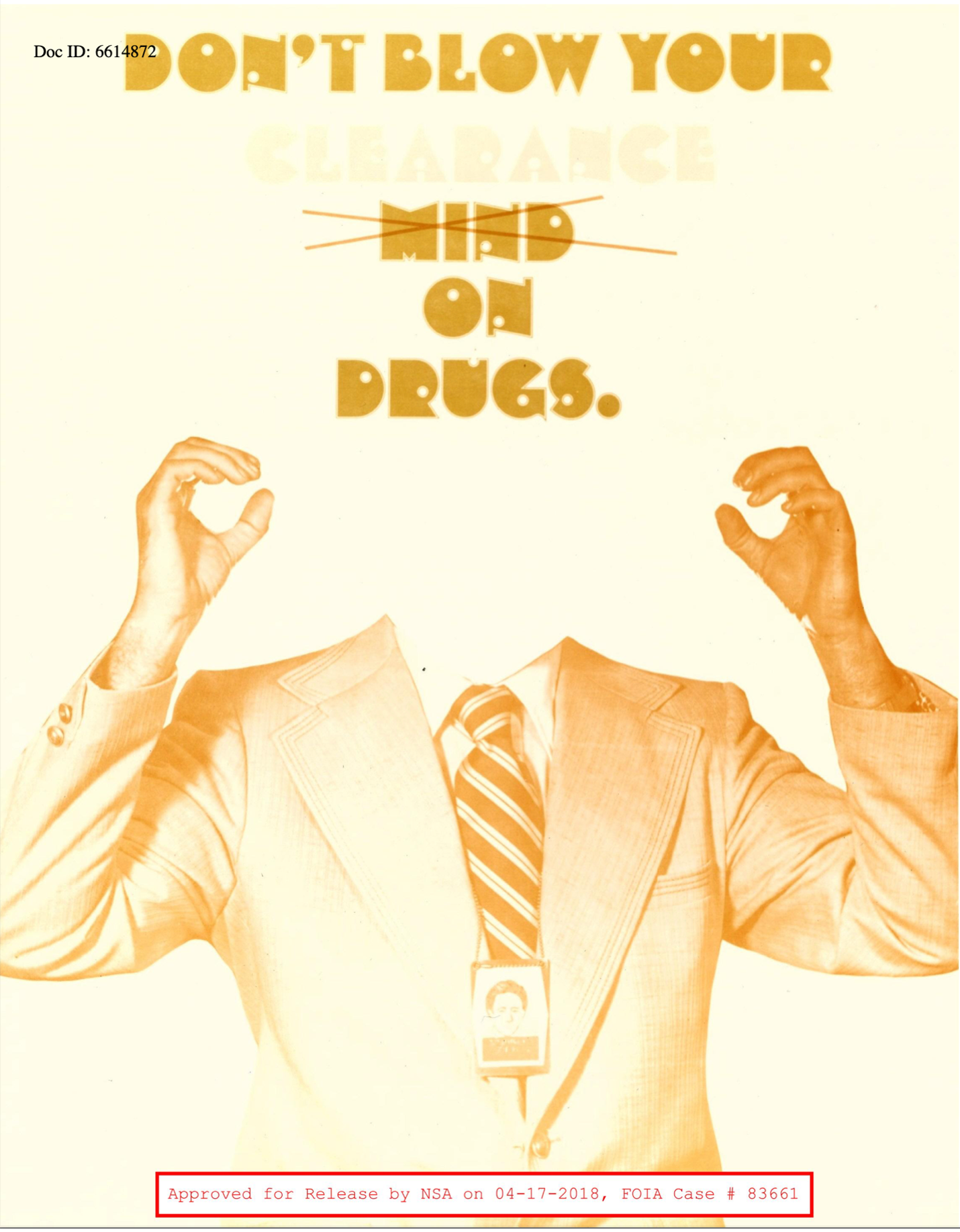
In a preview of what Snowden would eventually bring to light in the century that followed, the NSA was also focused on telephone lines in the Cold War era. This communication infrastructure became a significant concern for the government looking to protect itself from enemies (including their own citizens or employees) who could undermine national security. The telephone figured prominently in such warnings and was vividly portrayed as a dangerous and threatening mode of communication. According to the NSA, utilizing this medium in ways that betrayed the agency’s rules was hazardous to one’s health, to the point that the posters appear to be issuing blatant death threats to anyone who might consider using the phone to share intelligence. While popular culture references were also employed to lighten the mood, these posters are revelations in their own right, reminding us that when it comes to the state and its own secrets, the issue of privacy can be deadly serious.

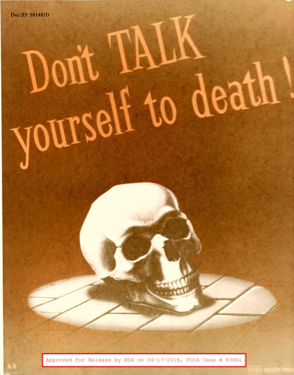

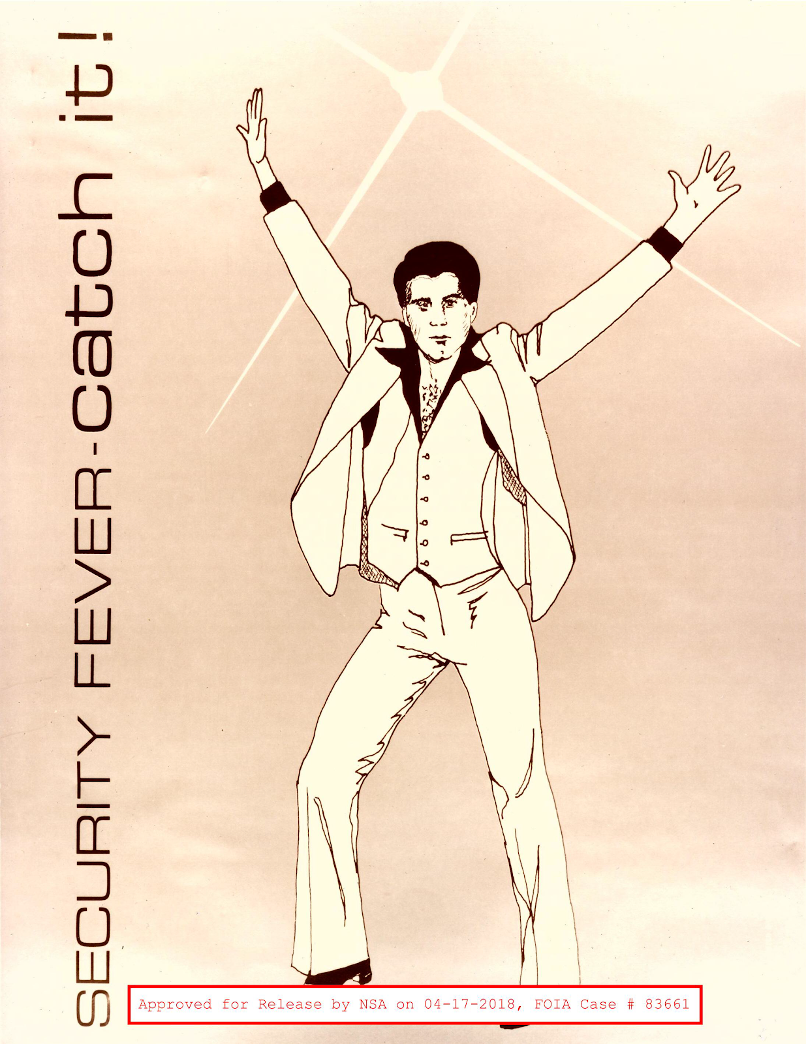
Image Credits:
- NSA Poster Credit: governmentattic.org
- NSA Poster: “Put Security Where Your Mouth Is” Credit: governmentattic.org
- NSA Poster: “Beware the Truce of the Bear” Credit: governmentattic.org
- NSA Poster: “So Right Together…Like Clearance and Need to Know” Credit: governmentattic.org
- NSA Poster: “Silence Too is Golden” Credit: governmentattic.org
- NSA Poster: “Security Means This…And More” Credit: governmentattic.org
- NSA Poster: “PS…Don’t Forget Security During the Holidays” Credit: governmentattic.org
- NSA Poster: “Don’t Blow Your Clearance on Drugs” Credit: governmentattic.org
- NSA Poster: “Telephone Security Begins Here” Credit: governmentattic.org
- NSA Poster: “Don’t Talk Yourself to Death” Credit: governmentattic.org
- NSA Poster Credit: governmentattic.org
- NSA Poster: “Security Fever, Catch It” Credit: governmentattic.org
- “The Many Lives of Herbert O. Yardley,” NSA Cryptologic Spectrum, Fall 1981, Vol. 11, No. 4. https://www.nsa.gov/Portals/70/documents/news-features/declassified-documents/cryptologic-spectrum/many_lives.pdf The Cryptologic Spectrum was an internal journal published by the NSA established in 1969. A selection of declassified articles from issues published between 1969-1981 can be found indexed here https://www.nsa.gov/news-features/declassified-documents/cryptologic-spectrum/ [↩]
- Alex Urbelis, “After a Century of Mass Government Surveillance, It’s Time for New Limits,” The Intercept, September 22, 2015. https://theintercept.com/2015/09/22/history-of-us-surveillance-shows-need-for-new-limits/ [↩]
- See “Supplementary Detailed Staff Reports on Intelligence Activities and the Rights of Americans, Book III: Final Report of the Select Committee to Study Governmental Operations,” April 23,1976. pp. 765-776. https://www.aarclibrary.org/publib/church/reports/book3/pdf/ChurchB3_10_NSA.pdf [↩]
- This was noted by Senator Frank Church who convened what become known as the Church Committee in 1975 to investigate widespread intelligence abuses. The committee published seven volumes of hearings. This quote can be found in “Supplementary Detailed Staff Reports on Intelligence Activities and the Rights of Americans, Book III: Final Report of the Select Committee to Study Governmental Operations,” April 23, 1976. P. 765. https://www.aarclibrary.org/publib/church/reports/book3/pdf/ChurchB3_10_NSA.pdf [↩]
- Sarah Igo, The Known Citizen, Cambridge: Harvard University Press, 2019. P. 3. [↩]
SOLOPRENEURS: Do you want in know the method for earn money online? By sharing a number, you can earn immediate and recurring revenue. Give Us a Call 24/7 1 (800) 318-9779 Identification # 00124
ENTREPRENEURS: Are you interested in discover the method for generate income online? If you provide a number, you can earn quick and continuous profits. Call 24/7 1(800)-318-9779 ID No. 00124